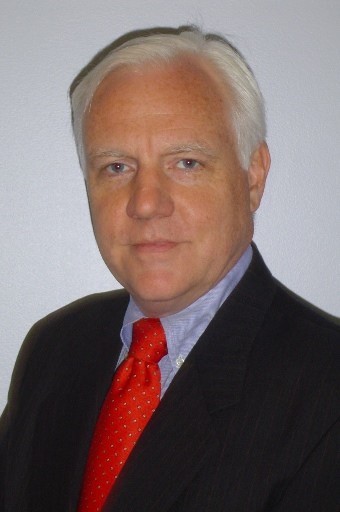After Scripps-Ion, TV Merger Options Look Scarce
Analysts await ad recovery, SCOTUS ownership ruling to guide future acquisitions

WASHINGTON—Marrying content with transmission—the core ingredient in the $2.65 billion E.W. Scripps Co. acquisition of Ion Media— is the goal for any future television group mergers, but it will be a tough fit, according to financial and media analysts. Although medium- and some small-market deals are possible, they will be affected by the perceived recovery of TV advertising when the pandemic eases and by the pending Supreme Court’s consideration of media ownership rules. Moreover, as a new PricewaterhouseCooper’s Media Outlook concludes, the role of broadcasting is unclear as media companies are “reconfiguring for digital” services (such as streaming), which means that, “Landmark acquisitions are out; buying growth and cash flows are in.”
“We’re evolving into a new generation,” said John Sanders of media valuation firm Bond & Pecaro. He characterizes the eventual companies as “not pure TV broadcasters” but rather media companies that “will be more diversified into content and distribution, including products that will be available on other formats.”
NATIONAL FOOTPRINT FOR SCRIPPS
The Scripps-Ion deal in late September—backed by $600 million of Warren Buffett’s Berkshire Hathaway funding—gave Scripps a national footprint; Ion stations reach 96% of U.S. homes in 62 markets, now making Scripps the largest holder of TV spectrum in the United States.
At the same time, the deal raised questions about who will buy the approximately 26 stations that the merged company must divest to comply with existing FCC duopoly restrictions. Some analysts have questioned why Scripps is selling off its prominent WPIX-TV in New York City and popular digital services such as its Stitcher Radio podcasting service.
Mark Fratrik, senior vice president and chief economist at BIA Advisory Services, expects some of the stations will be spun off to other broadcasters already in those markets, creating new duopolies. Although he offered specific examples, Fratrik noted that in such cases spinoffs “are lined up... beforehand.”
Wells Fargo Securities Managing Director Steven Cahall initially raved about the Scripps-Ion “transformative” alliance, which improved Scripps’ position in both local and national presence. But a week later, at TVB’s (Alt) Forward Conference, Cahall, who is senior analyst, Media & Advertising, conceded that it is not a harbinger of other big TV deals.
Broadcasting is “out of favor” with investors, who fear that the TV industry may not come back to its earlier level after the pandemic, Cahall said. He cited the loss of revenue from retransmission fees paid by cable and satellite operations as cord-cutting continues, and he contended that broadcast groups are over-leveraged, sometimes running at 4x EBITDA (earnings before interest, taxes, depreciation and amortization), which Cahall called “too much risk.”
Get the TV Tech Newsletter
The professional video industry's #1 source for news, trends and product and tech information. Sign up below.
Adding to the uncertainty about the M&A scene is the looming Supreme Court decision about media ownership requirements. Last month, the high court agreed to hear the cross-ownership case during the current session. Although the “Prometheus Radio Project, et al.” case ostensibly is about racial/ethnic/gender diversity, most analysts expect the ruling to be much broader.
FCC Chairman Ajit Pai, the NAB and others want to eliminate the 1975 FCC cross-ownership rules that ban any company from owning a newspaper and TV station in a single market. The Supreme Court’s decision to hear the case comes as the FCC reviews the value of other rules that have lasted decades, including a prohibition on any merger between or among the Big Four broadcast networks, ABC, CBS, Fox and NBC.
GAUGING GROWTH
A complicated S&P Global “sentiment analysis” in early October backed up the low expectations for broadcast mergers in the months ahead. Using “Natural Language Processing” to analyze vocabulary during broadcast companies’ recent quarterly earnings calls, S&P identified that “the average sentiment score has declined... as the pandemic and current local economic conditions have limited deal activity.”
S&P also cited the “sharp drop recently... as broadcast stocks witnessed a big sell-off.” In addition, it noted a “downward trend” affecting distribution and programming, fueled by rising sports rights fees and reverse compensation coinciding with growing competition from digital providers.
On the bright side, S&P’s analysis found that TV station groups have been upbeat about “the benefits of ATSC 3.0… [and] growth in over-the-top and target advertising platforms”—although that optimism from the spoken words appears tempered by analysts’ observation of activities.
Sanders, founder and principal at Bond & Pecaro, sees a new approach to M&A emerging. “Usually broadcasters want to get leverage over MVPDs [multichannel video programming distributors], but I don’t think that model will last,” he said. “It’s already changing, which is putting pressure on MVPDs.”

Sanders also affirmed that a “content plus transmission” approach is gaining traction, citing Sinclair’s purchase of regional sports networks and the Nexstar/Tribune deal, which includes stakes in content from the Food Network and WGN America. Sanders also believes that big groups such as Nexstar and Gray are seeking to “spread the risk by diversifying into new areas,” by acquiring more content sources.
Sanders expects that the M&A market will cool, noting that big owners aren’t yet trying to push the ownership caps. “They are making their overall businesses more diverse and robust,” he says, citing the problems of becoming “too big” and pointing to the Clear Channel radio juggernaut that once had 1,500 stations.
The Scripps-Ion merger is a “spectrum play,” Sanders says, which distinguishes it from most other possible deals.
“Ion stations never had big audience shares in their markets, while Scripps is a content company with several subchannels,” Sanders says. “They can build the business by using the expanded footprint.” He characterizes this approach as “unlike the Nexstar evolution.”
Sanders is bullish on local broadcasting content. “News broadcasting is still the sirloin of the broadcast day,” he says. “Stations will take advantage of central casting, but if they don’t have a credible, bona fide local product, audiences will go somewhere else.”
“There are always going to be some deals... to optimize the coverage area,” Sanders added. Scale is always important, he adds, speculating that Graham Holdings, an Arlington, Va.-based media company with seven TV stations, and Hearst, which owns several cable networks and 33 TV stations—which may not get big enough—could become M&A prospects.
Sanders points out that, “The multiples have come down a bit because of COVID-19 and other factors.”
“This used to be a 13x multiple industry, now you’re in 7x to 10x range,” he explains. “I expect TV broadcasting companies are very well positioned to move into the future. They are maintaining margins that are the envy of most industries. They have advertising plus retransmission revenues. They are all under pressure but not on a long-term declining trend. That gives a base to fund initiatives into the future.”
Sanders characterizes retransmission fee revenue as in “a very mature phase,” citing how the double-digit growth “norm” has dropped into low single digits. He believes that small marginal networks will be hurt most by this decline while local stations will stay strong.
“There’s going to be continuing pressure and perhaps erosion, but you won’t see a knockout punch, unless there’s a regulatory or legislative action,” he added.
LOW INTEREST RATES COULD SPUR ACTIVITY
Fratrik envisions a “wait and see” outlook for 2021, which will affect the M&A appetite, although he believes “there is always a push to make acquisitions.” Although the overall economic situation may remain tight, Fratrik points out that, “interest rates are incredibly low, so you can get financing at low rates and investments from private sources.”

“There isn’t a lot of activity, but there may be some [interest among] smaller groups,” he added. He cites the most likely ingredients being “if families want to sell out or have owned their stations for a long time and don’t have much debt.”
Fratrik acknowledged the inducements of TV mergers based on “so many synergies when you are part of a larger group, especially the ability to serve the local market.”
Like others, he points to the Supreme Court ownership review, which could shove aside “antiquated local ownership rules that prevented some acquisitions.”
“Sooner or later we’ll get rid of the newspaper cross-ownership rule, especially in smaller markets,” Fratrik says.
As for whether eventual mergers will happen “now or later,” Fratrik points out that, “There’s always an incentive to move now so you can bring synergies and cost savings sooner rather than later.”
“I still believe that local TV is very important... especially among [key] demographics,” he said. “As other competitive media weaken, local TV stations stay very prominent.” He notes that as cord cutting continues, streaming services may generate a new level of competition for local TV stations.
He cites the “cost synergies” that make mergers appealing, including “some staff reductions” for efficiency. A recent BIA study found the amount of weekly local TV newscasts increased in the 93 markets that were evaluated after “consolidation events.” The number of news employees also increased.
“That’s significant because it defies the idea bandied about for years,” Fratrik says, contending that mergers “make the industry healthier and encourage [stations] to invest in more programming.”
IMPACT ON ATSC 3.0 TRANSITION
One consideration of the Scripps/Ion merger is its role in the ATSC 3.0 evolution. Scripps is significantly committed to NextGen TV, but Ion is not, suggesting that the merged company could become a major player in 3.0 development.
But overall, Fratrik of BIA doesn’t expect that ATSC 3.0 will play a role in the M&A outlook soon. “Down the road 3.0 is important, but it’s not immediate and hence not as important,” he said. “Some markets will be affected sooner than others, but the local economy, employment and competition are more important factors.”
Sanders believes ATSC 3.0 “will be a gamechanger” and eventually 4K TV will enhance the appeal with “more channels, better sound, on-demand, mobile devices delivery and the data opportunities.” But although “the pieces are falling into place,” he admits that 3.0 is “not reflected in the values.”
“There are lots of projections, but it was so statistically complex,” he says, and doesn’t expect it to be a factor in station pricing “until we have a better idea how 3.0 will be monetized.”
Joe Zaller, founder of Devoncroft Partners, has looked at the impact of industry consolidation on the technology suppliers who sell tools and software to the TV industry. He sees the mergers as one factor, along with shifting tastes in sports viewing, as affecting the supply chain.
“These factors put increasing pressure on tech suppliers who are already in the middle of multiple once-in-a-generation tech upgrades/shifts,” Zaller says, pointing to the IP transition, the cloud and other developments. “The majority of media tech suppliers are... small businesses, while most of their customers are not. There has always been a ‘size asymmetry’ issue in the broadcast industry, but the pandemic makes it worse.”
Adopting the popular maxim that “everything is for sale at the right price,” Zaller believes that suppliers with good market positions and solid financials are available for M&A opportunities, “ranging from small bolt-ons to transformative deals.” His company recently analyzed the strategies behind Sony’s acquisition of Nevion, the Norway-based maker of IP-based production tools.
Zaller added that he does not foresee antitrust barriers to technology mergers.
REGULATORY REVIEW
While awaiting the SCOTUS decision, the FCC is expected to approve the Scripps-Ion deal and anything similar that comes its way, according to a prominent broadcast attorney who requested anonymity because of his involvement in pending deals. This agreement complies with the ownership caps even if a future Democratic-majority FCC eliminates the UHF discount for counting viewership, he said.
He agrees that the future of dealmaking will—if any materializes—face smooth sailing, since the smaller groups own a dozen or fewer stations and pose no antitrust barriers. A major factor, he said, is the revenue outlook, since many small stations are now bartering for syndicated programs and the ads they can sell on those series.
“It’s a different business now; you’re fighting for a few viewers,” he said.
Gary Arlen, a contributor to Broadcasting & Cable, NextTV and TV Tech, is known for his visionary insights into the convergence of media + telecom + content + technology. His perspectives on public/tech policy, marketing and audience measurement have added to the value of his research and analyses of emerging interactive and broadband services. Gary was founder/editor/publisher of Interactivity Report, TeleServices Report and other influential newsletters; he was the long-time “curmudgeon” columnist for Multichannel News as well as a regular contributor to AdMap, Washington Technology and Telecommunications Reports; Gary writes regularly about trends and media/marketing for the Consumer Technology Association's i3 magazine plus several blogs.

